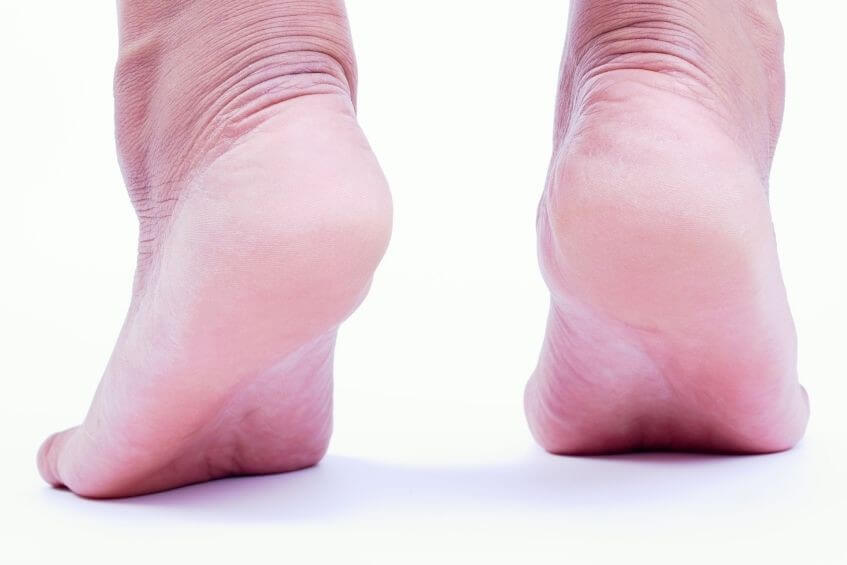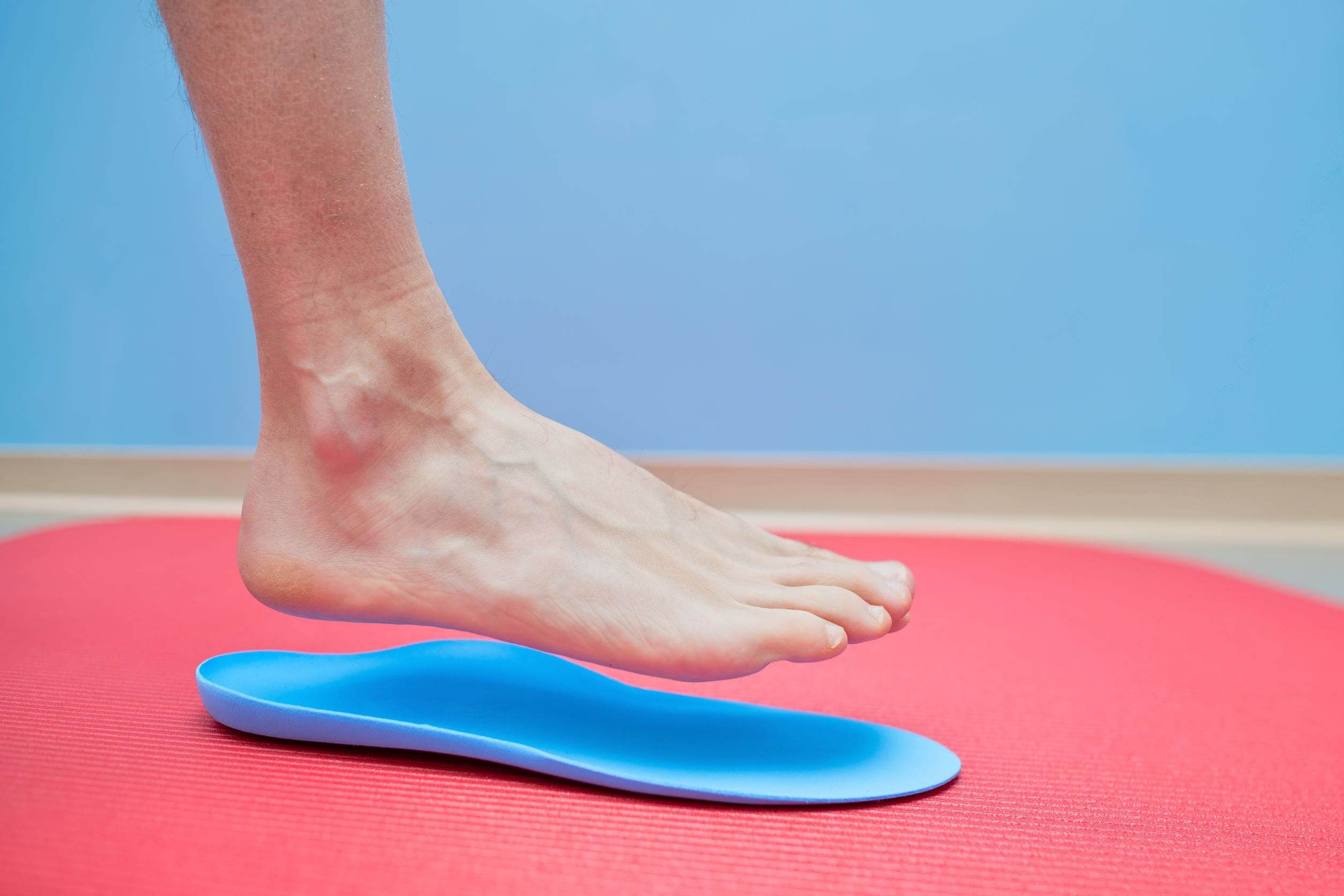
Jump to section
Chronic ankle instability is a life-changing condition for many of our patients, who are faced with watching their steps very
carefully, sitting out high-risk activities or sports that require lots of side-to-side movement or quick changes in direction, and
generally being wary of their movements in everyday life. Our Brisbane podiatrists work extensively with those suffering from chronic ankle
instability to help them move with confidence and comfort, and without pain or injury.
When you have chronic ankle instability, you have weakness and instability in your ankles to the point that they can give way during walking and everyday activities. This leads to ankle sprains where you roll onto the outside of your ankle, causing pain and further damage.
Chronic ankle instability can affect anyone, not just those that exercise regularly or are physically active. When we see patients that are affected, there is often:
Ligaments connect two bones together like strong, firmly attached straps. Your ankle is supported by several ligaments that help stabilise the ankle joint. These ligaments help control excessive side to side motion and enable you to walk confidently and comfortably with every step.
During an ankle sprain, you roll onto the outside of your ankle and stretch the ligaments and tissues past the point that they can safely handle, causing damage to the ligaments and pain. This is where proper rehabilitation is needed to help restore full strength and function to the ankle and the ligaments. Unfortunately, it’s also where many people fail to seek proper rehabilitation due to ankle sprains being common. Remember, there’s a big difference between ‘common’ and ‘normal’, and ankle sprains are never normal, nor should they be accepted as a regular occurrence or possibility.
When someone experiences repeated ankle sprains, especially without the right rehabilitation, this can lead to further damage and weakening
of the ligaments, leaving the ankle in a weakened and unstable state. This is known as chronic ankle instability. The inflammation that can
occur following ankle sprains can also contribute to the progression of chronic ankle instability because of the effect that a prolonged
inflammatory process can have on tissues.
Our podiatrists diagnose chronic ankle instability by going through a detailed look into your medical and injury history, looking particularly at your history of ankle sprains and the measures taken to rehabilitate your ankle following these incidents. Next, we’ll perform a comprehensive assessment of the foot and ankle, including a video gait analysis and in-shoe pressure analysis. The goal is to understand the strength, stability and function currently available at the ankle, check for any symptoms, and use these findings to also rule out other causes of ankle pain such as a fracture, sinus tarsi syndrome, osteochondral defects (injuries to the talus bone that forms part of your ankle), peroneal tendinopathy (which can lead to weakness of the ankle stabilisers) and more.
If needed, we can refer you for medical imaging such as ultrasound to better understand the state of your ankle ligaments, as well as the surrounding areas. An initial assessment is usually sufficient for our podiatrists to confidently diagnose chronic ankle instability.
If you suspect that you have chronic ankle instability, something you can do immediately at home to help best support your ankle is switch
to a supportive pair of shoes like running shoes that wrap around the ankle and support the ankle so it cannot freely roll. If you have
strapping tape at home, you can also try strapping your ankle to increase stability - here
is an example of an ankle stability strapping technique.
If you’re experiencing pain, you may choose to use NSAIDs to help temporarily improve your comfort. Next, book an appointment with
your podiatrist.
Our Brisbane podiatrists offer a variety of treatment options for chronic ankle instability in line with rehabilitation guidelines. Our goal is to help you:
During your appointment, we may discuss options with you including:
Custom foot orthotics are medical devices that sit inside the
shoe and can contain features, such as a raised lateral border, that best support the ankle, add stability during movement, and reduce the
likelihood of a sprain. All of our orthotics are custom-made from a 3D scan of your foot paired with a comprehensive assessment, so we can
prescribe the best features for your ankles and feet.
The Exo-Brace is a leading slimline ankle
brace that is proven to prevent up to 95% of ankle sprains, while allowing your ankle to move freely and comfortably. Think of it like a
seatbelt, kicking in when you need it most - the moment just before you roll your ankle and sprain your ligaments. The Exo-Brace is a custom
device made from a 3D scan of your ankle and an assessment. It cups the back of your ankle and uses the side of your shoes as an anchor
point.
Part of your treatment will always involve a program to work on your ankle ligament strength, as well as proprioception training (balance
and stability) and neuromuscular training to help retrain how your muscles activate.
We’ll also assess your footwear and give you recommendations of the best footwear to help support your ankle in light of your foot type and ankle characteristics.Given the success that we see of these conservative modalities in helping improve the quality of life of those with chronic ankle instability, we view ankle surgery as a final resort, due to the invasive nature of the procedure, the recovery time, and the risk factors.
The MLS laser is a fantastic way to relieve pain and promote healing and repair when it comes to ankle sprains. The laser works by interacting with the tissues on a cellular level to produce fantastic results.
The simplest way to help prevent chronic ankle instability is by effectively rehabilitating ankle sprains when they occur. You want to work
with an experienced podiatrist, who will use strategies like a neuromuscular training program which has demonstrated success in reducing the
risk of an ankle sprain by between 20% to 60%. Another important preventative measure is wearing supportive and stabilising footwear in
place of shoes that offer poor ankle support and let the ankle roll freely.
Prevention is an important way to help stop ankle sprains and ankle instability from becoming a normal part of your life, as just because a
problem can be common, does not mean that it is normal.
Other Ankle Problems We Treat
Alongside chronic ankle instability, we help treat a wide range of ankle problems including:

Our feet are the foundation for the entire body, so it's important that they have enough strength to tolerate our activity levels. Use
these three exercises to help strengthen your feet.

Not everyone needs orthotics, but they can play an integral role in treating or relieving pain in several foot and lower limb conditions.

The heat and humidity of an Australian summer makes it a prime time for issues to arise, so our newest podiatrist Lucy has put together
seven helpful tips to keep your feet healthy and problem free throughout summer.
| Monday | 7:40am - 6:00pm |
| Tuesday | 7:40am - 6:00pm |
| Wednesday | 7:40am - 6:00pm |
| Thursday |
7:40am - 6:00pm |
| Friday | TEMP CLOSED |
| Saturday | CLOSED |
| Sunday | CLOSED |
Ground Floor, 344 Queen Street,
Brisbane City QLD 4000
| Monday | 7:40am - 6:00pm |
| Tuesday | 7:40am - 6:00pm |
| Wednesday | 7:40am - 6:00pm |
| Thursday |
7:40am - 6:30pm |
| Friday | 7:40am - 5:00pm |
| Saturday | 7:40am - 4:30pm |
| Sunday | CLOSED |
Newmarket Village, 114/400 Newmarket Rd, Newmarket QLD 4051